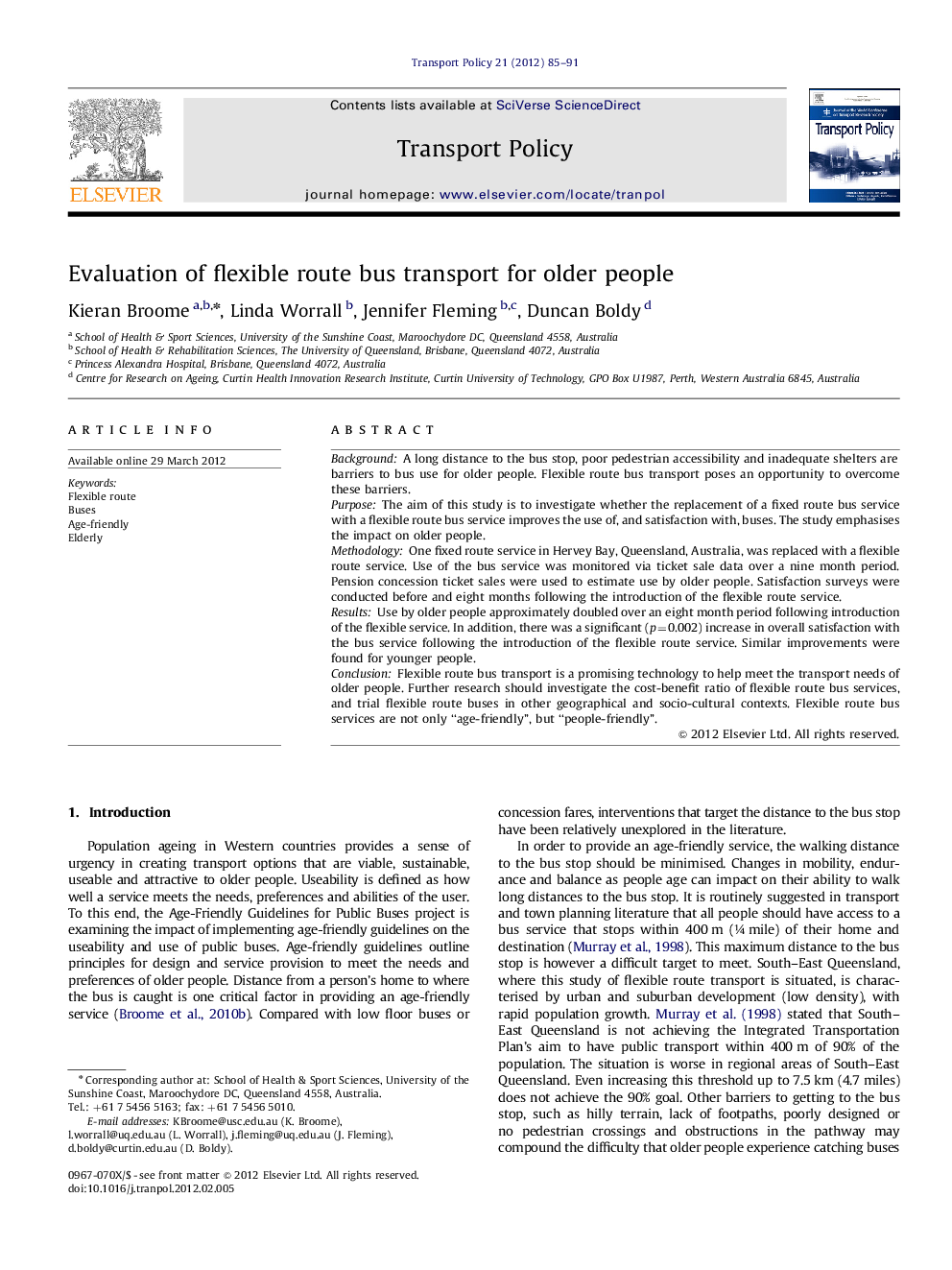| Article ID | Journal | Published Year | Pages | File Type |
|---|---|---|---|---|
| 1065187 | Transport Policy | 2012 | 7 Pages |
BackgroundA long distance to the bus stop, poor pedestrian accessibility and inadequate shelters are barriers to bus use for older people. Flexible route bus transport poses an opportunity to overcome these barriers.PurposeThe aim of this study is to investigate whether the replacement of a fixed route bus service with a flexible route bus service improves the use of, and satisfaction with, buses. The study emphasises the impact on older people.MethodologyOne fixed route service in Hervey Bay, Queensland, Australia, was replaced with a flexible route service. Use of the bus service was monitored via ticket sale data over a nine month period. Pension concession ticket sales were used to estimate use by older people. Satisfaction surveys were conducted before and eight months following the introduction of the flexible route service.ResultsUse by older people approximately doubled over an eight month period following introduction of the flexible service. In addition, there was a significant (p=0.002) increase in overall satisfaction with the bus service following the introduction of the flexible route service. Similar improvements were found for younger people.ConclusionFlexible route bus transport is a promising technology to help meet the transport needs of older people. Further research should investigate the cost-benefit ratio of flexible route bus services, and trial flexible route buses in other geographical and socio-cultural contexts. Flexible route bus services are not only “age-friendly”, but “people-friendly”.
► Flexible route buses improve bus patronage for older people. ► Flexible route buses improve satisfaction with buses for older people. ► Flexible route buses are not only “age-friendly”, but “people-friendly”.
